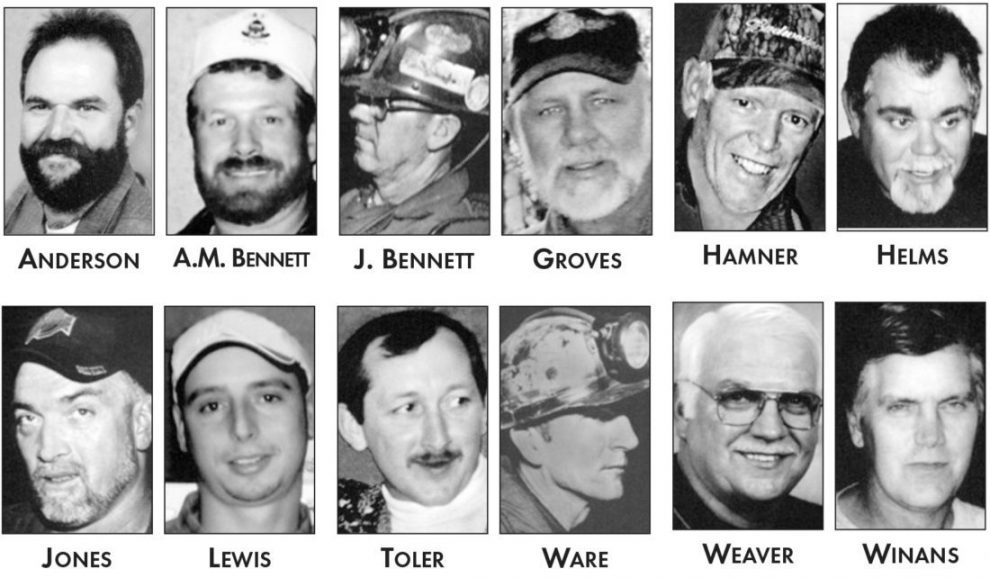The Sago Mine disaster is one of the world’s most tragic mine disasters. Twenty-nine coal miners went underground at International Coal Group’s Sago Mine near Buckhannon in Upshur County, West Virginia, USA on the morning of January 2, 2006.
According to available records, at 6:26 a.m., a methane ignition in a recently sealed area of the mine triggered an explosion that blew out the seals and propelled smoke, dust, debris and lethal carbon monoxide into the working sections of the mine.
One miner was killed by the blast. Sixteen escaped. Twelve were unable to escape and retreated to await rescue behind a curtain at the face of the Two Left section.
Mine rescuers found the trapped miners approximately 41 hours later. By that time all but one had succumbed from carbon monoxide asphyxiation.
A total of twelve miners died in the Sago Mine Disaster.
Names of Deceased miners
- Thomas P. Anderson 2nd Left Parallel Shuttle Car Operator
- Alva M. Bennett 2nd Left Parallel Mining Machine Operator
- James Bennett 2nd Left Parallel Shuttle Car Operator
- Jerry L. Groves 2nd Left Parallel Roof Bolter Operator
- George J. Hamner 2nd Left Parallel Shuttle Car Operator
- Terry Helms Mine Examiner
- Jesse L. Jones 2nd Left Parallel Roof Bolter Operator
- David W. Lewis 2nd Left Parallel Roof Bolter Operator
- Martin Toler Jr. 2nd Left Parallel Section Foreman
- Fred G. Ware 2nd Left Parallel Mining Machine Operator
- Jackie L. Weaver 2nd Left Parallel Electrician
- Marshall Winans 2nd Left Parallel Scoop Operator
Injured Miner
Randal McCloy Jr. 2nd Left Parallel Roof Bolter Operator Suffered from Carbon Monoxide Poisoning (See Video Below)
What was the cause of the Sago Mine Disaster?
The USA Mine Safety & Health Administration found lightning was the most likely ignition source for this explosion with the energy transferring onto an abandoned pump cable in the sealed area and igniting the methane that had accumulated within the sealed area.
Links to reports on the Sago Mine Disaster
Read more Mining Safety News














Add Comment